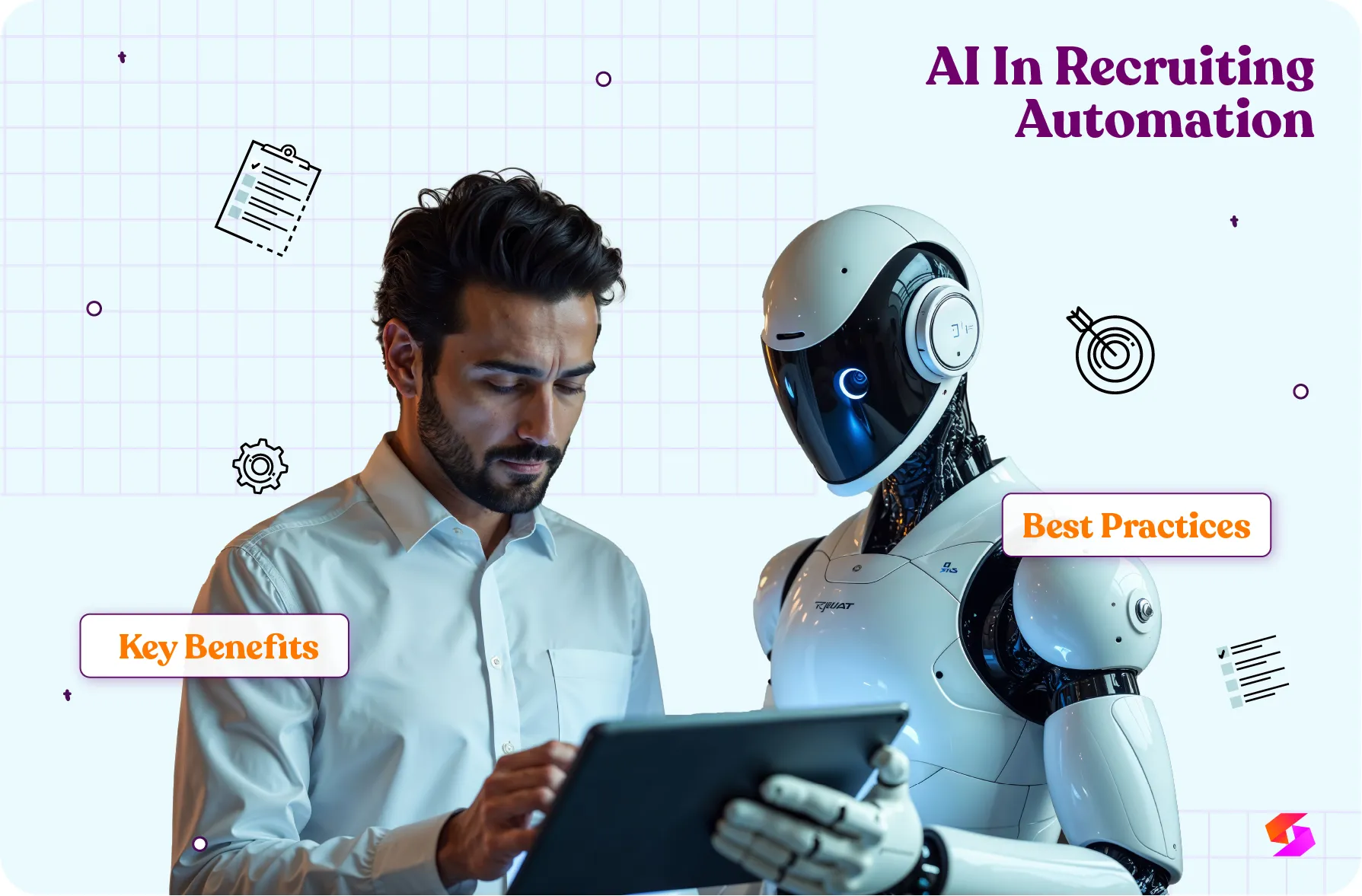Adopting recruitment software into your journey is most certainly one of the most important tasks to execute. From a growing recruitment agency to an established organisation, from hiring managers to HR executives, the right tool can help you make better recruiting decisions, accelerate your hiring process, and enhance your overall performance.
With the recruitment software market projected to reach $3.85 billion by 2028, it’s evident that more businesses are actively recognizing and incorporating these recruitment tools into their day-to-day recruitment workflows. With that in consideration, picking the wrong software can just as easily put you in distress and cripple your business growth. Whether your goal is to streamline candidate experience, collect valuable hiring insights via analytics or improve recruitment efficiency, asking the right question before investing in recruitment software is necessary. So, what are those questions? Let’s discuss them in this blog.
Why Do You Need Recruitment Software?
Sometimes the words of wisdom fall short of explaining the dire need for agencies to incorporate hiring tools into their talent acquisition strategies. Hence, here are some very obvious and frankly stirring data that will stop you from asking "Do I really need recruitment software?"-
- 97% of Fortune 500 companies are using some type of applicant tracking system or recruitment software solution.
- 86% of recruiters agree that an ATS reduces time-to-hire.
- 79% of recruiters saw an increase in quality hires after adding recruitment software to their TA process.
- 68% of recruiters believe that integrating artificial intelligence in recruiting will remove any unconscious bias.
- 67% of large companies and 35% of small businesses use ATS on a daily basis.
10+ Questions to Ask Before Buying Recruitment Software
1. Is the ATS Future-proof?
Among many industries adopting AI, talent acquisition is one field that has significantly taken advantage of this growing trend. In fact, 76% of recruiters believe that by not taking advantage of AI, their organisation can fall drastically behind in terms of company growth. So, you must compare your applicant tracking system (ATS) with the best ATS for startups, and see if your software is loaded with all the latest features needed to streamline hiring. From generative AI to gamification in the hiring process, your ATS must be ready to adapt to modern hiring practices. Ask your vendor, if the software is ready to help with your recruitment challenges of today and tomorrow.
2. Can The Tool Provide A Centralised Sourcing Solution?
Sourcing is an important part of every recruitment strategy. It is a continuous effort to attract active job seekers and identify passive candidates. From career sites (28.93%) to job boards (19.12%) like LinkedIn, Naukri and more, several sourcing channels are frequently used by HRs. It’s necessary that recruitment software can cut your manual labour of posting job details on every platform individually and help you with a centralised sourcing option. Before choosing a recruiting software consider testing if the tool can handle multiple niche job boards.
3. Is Mass Emailing An Option?
As your recruiting experience grows, so does your candidate database. More often than not, you will use your database to look within to find qualified candidates. Sending mass emails to targeted candidates from your pool is one of the most common ways to reach out and inform potential employees about any open position. If not today, sometime in the future; you will certainly be compelled to send bulk emails, especially when you're doing high-volume recruiting. Is your ATS ready for such needs? It's important to check if the recruitment software allows mass email and if it does, what's the frequency and number of mails it can accommodate.
4. Can It Help You Identify The Right Candidates From Your Pool?
With 75% of employers indicating difficulty in filling job roles, it’s evident that there is a clear talent shortage. This indirectly affects the quality of applicants with dozens of applications coming in for a single job post but when put under the microscope, only a few qualify. It's an added effort that recruiters have to suffer through with every job requisite. However, AI-enabled tools like Skima can screen your candidate database and deliver a listicle view of the most qualified candidates for a job role. It’s important your recruitment software does this to save time and render your hiring process more productive.
5. Is The Resume Parsing Technology Of The ATS Advanced Enough For Modern Hiring Practices?
Almost all applicant tracking tools today provide a basic parsing function. However, the traditional parsers are most commonly keyword-based and work on specific prompts. This, unfortunately, a lot of times, can lead to rejections of qualified candidates, without even coming to the notice of the recruiter. An advanced resume parsing technology powered by AI and trained on hundreds of data points can negate the deficiency of the older systems and help you with a refined experience. So, ask your vendor for more details about the resume parsing technology they use.
6. How Efficient Is The Software For Interview Scheduling?
A comprehensive recruitment software that boosts the efficiency of recruiters must have the features to accommodate interview scheduling at multiple levels of the hiring process. Timely execution of interviews, especially when multiple interviewers including hiring teams and hiring managers are involved, can become complex. With multiple candidate profiles to juggle, manually tracking each candidate’s progress and interview levels can strain you. Therefore, it’s recommended that you choose a recruitment software that features effortless interview scheduling.
7. Can The Software Generate Automated Job Descriptions?
Generic and lengthy job descriptions are a thing of the past. In a survey conducted by Indeed, 52% of job seekers agreed that the quality of the job description is an important factor in deciding whether to apply for a job or not. Moreover, to the point, detailed-oriented job posts are also preferred by top candidates. And, let’s agree that we aren’t all the best at developing flawless JDs. Even after continued practice two things that will remain constant are the manual effort that goes into creating JDs and the complexities of different jobs. Hence, AI job description generator software that can generate crisp, job-specific descriptions is necessary.
Skima’s AI-driven job description maker provides culturally sound JDs that not only entail every detail of the job but also keep the entire content engaging for job-seekers to stick through the end. When choosing software it's good to have such a feature or at least an option to integrate with another platform like Skima that offers free AI job descriptions, among other services.
8. Can You Use The ATS To Store Your Candidate Database And Make Searches Within It?
Even though you have your candidate database on Google Drive or on a hard drive today, as your company grows and more candidate profiles join your pool, you will run short of local or free storage.
Thus, it’s always great to have an ATS that provides storage facilities too. After all, if you are using the tool for almost all your recruiting tasks, then why not storage? Now, beyond storage, being able to quickly browse through and identify the candidate profiles is also an important factor. High-volume recruiting demands that you can swiftly move through candidate profiles in your database without the burden of manually finding them, one CV after the other.
9. Are Chatbot Features Available?
AI chatbots have drastically improved the communication between candidates and recruiters. One of the many benefits is that chatbots can easily filter applicants with conversational AI and provide a more refined selection of candidates to recruiters for further rounds. Chatbots are also instant and function round the clock which can certainly aid in building positive candidate experiences. Let chatbots answer all the obvious questions while you answer the most pressing ones. Ask your vendor if chatbots are available in the ATS.
10. How Does It Make Candidate Engagement Better?
While 52% of candidates stay connected with employers who provide them with honest feedback, 54% leave the hiring process completely due to poor communication. We cannot emphasise more on the dire need for recruiters to focus on streamlining communication in their recruitment process.
Streamlined communication can not only facilitate a positive candidate-employer relationship but also assure top talent that their time and efforts are valued. This can drastically reduce the time to fill and abandonment rate. With reminders, automated responders and tailored messages, an ATS should be able to help you perfect your candidate engagement methods.
11. How Good Is The Tool With Tracking And Analytics?
HR certainly has humans in it, but it’s incomplete without data. From monitoring the average response time of applicants to analysing candidate drop-off rates and understanding the time to fill different jobs, as a recruiter, you have multiple recruitment metrics to track. Recruitment software should be able to break down these KPIs for you and deliver detailed reports that can aid in your decision-making.
End Note
A plethora of recruitment software is available today, including AI job description generation tools, and resume screening software. Searching online, you would only be going round and round from one tool to another. Thus, you must ask the right questions to make sure the software you finally choose not only complements your budget but also takes into account your current and future recruitment needs. So, ask the right questions.
If you enjoyed this blog, subscribe to our recruitment & hiring blog.
Happy Recruiting!



